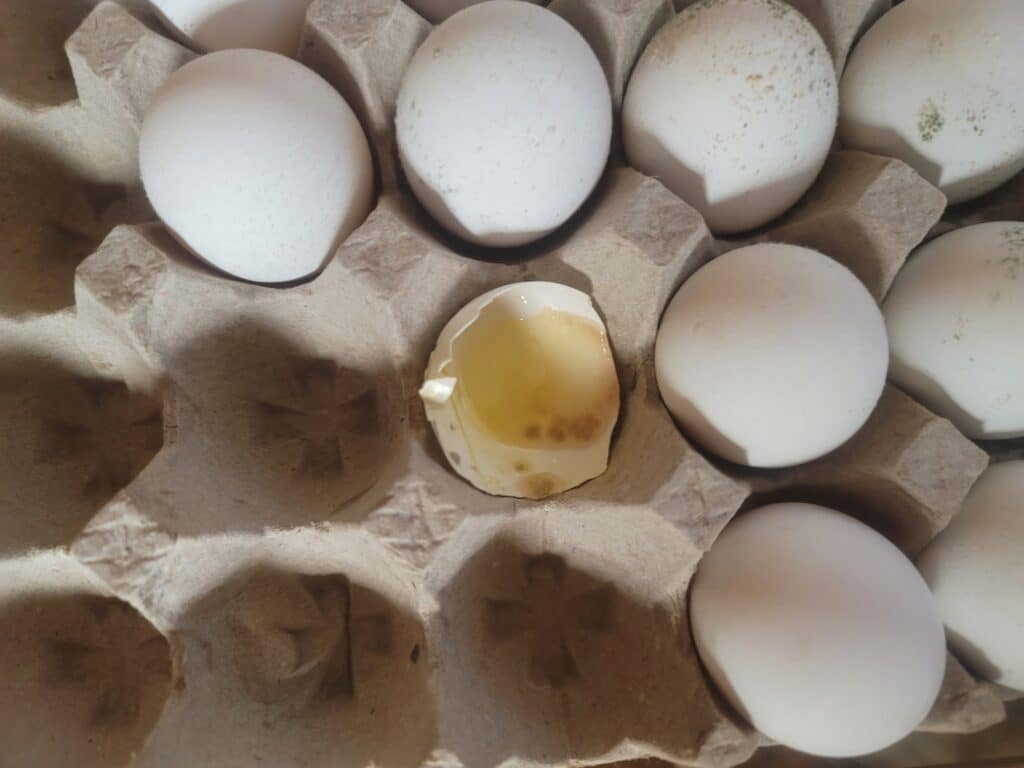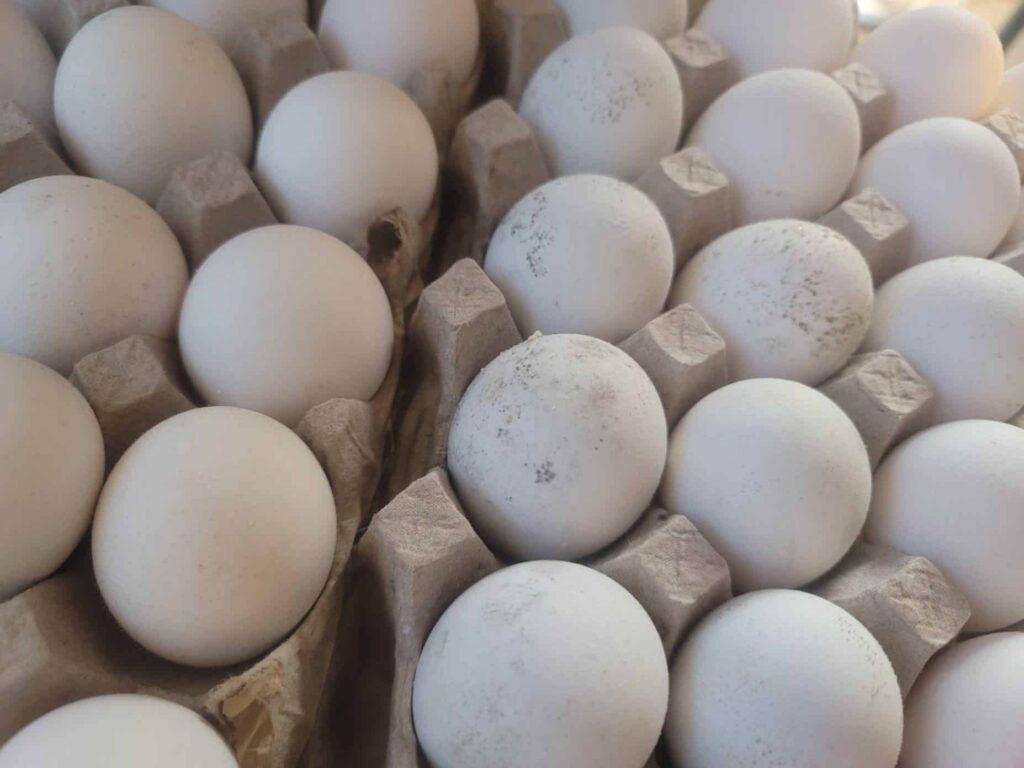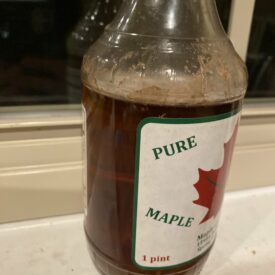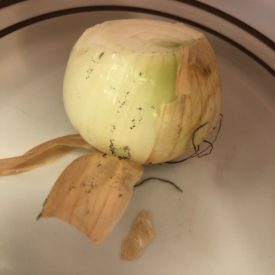
What you see: Your eggs have something unexpected, likely black, growing on the surface or possibly inside the shells. They look like the eggs in the images in this post.
What it is: Moldy eggs!
Eat or toss: Toss!
Moldy eggs are not good to eat
Atlanta reader Marco left these store-bought eggs at room temperature for two weeks. Ooops! During that time, raised, dirty-looking spots developed. Mold! Yeek!
So, first off, yes, raw eggs can grow mold! And second, no, you definitely don’t want to eat them! (And, third, thanks to Marco for documenting your moldy egg experience and sharing it with us!)
How does mold grow on an egg?
Deana R. Jones, of the U.S. Department of Agriculture’s National Poultry Research Center, said dust and grime on an egg’s surface can encourage mold to grow. According to the University of Kentucky Cooperative Extension, dirty wash water and humid storage conditions can also promote mold growth.
Marco’s eggs didn’t just have mold on the surface. The egg pictured below clearly has some moldy excitement on the inside too. Jones explained that mold can slip into eggs via little pores on the shell. The shell is actually a pretty complex place, with two thin membrane layers just below the mineralized exterior and the egg white (also known as the albumen) just below that.
Mold especially likes to settle in between the two membranes, Jones said.
“It’s a neutral pH environment, it’s got the moisture level that they need to grow. It’s a happy place for them,” she said.

What to do if your eggs grow mold
Penicillium, alternaria and rhizopus molds have been found on eggs, according to an FAQ about eggs from the University of Kentucky Cooperative Extension. Uninvited mold degrades food as it grows, potentially leading to off flavors and textures. And, some molds can produce toxins you don’t want to ingest, so this is definitely a toss.
If some of your eggs have obvious mold, but others don’t, Jones advises either throwing all of them away or inspecting the ones without visible mold growth carefully. She suggests cracking those eggs into a separate container and inspecting the contents and the inside of the shell for signs of mold.
How to prevent mold growth in an egg
Mold grows faster at warmer temperatures, so storing your eggs in the fridge will slow it down. (In the U.S., commercially sold eggs are washed to remove grime, but that also disrupts a protective outer layer, which is another reason why you should refrigerate your eggs.)
But it’s still possible for mold to grow in a fridge; it’ll just develop slower.
If you get eggs from a local farmer or your own backyard chickens, Jones said that you shouldn’t wash them–industrial-scale egg washing follows precise safety guidelines that are easy to get wrong at home. Instead, she advises giving them a “dry clean,” before refrigerating them to remove dirt, mold spores, manure and anything else that could diminish the lifespan of the egg. To avoid cross contamination, she advises cleaning each egg with a fresh area of a cloth (as in, not cleaning multiple eggs with the same part of a cloth).
“That’ll help reduce the likelihood of mold growth in refrigeration,” she said.

SOURCES:
- Deana R. Jones. Acting Center Director, U.S. National Poultry Research Center. U.S. Department of Agriculture, Agricultural Research Service. Phone interview March 2023.
- Eggs inside and out. Egg Safety Center, Accessed March 2023.
- Common questions about eggs. Jacquie Jacob and Tony Pescatore. University of Kentucky – College of Agriculture – Cooperative Extension Service. Accessed March 2023.
Store your eggs properly to prevent mold from striking! Otherwise, you might end up with egg on your face.











